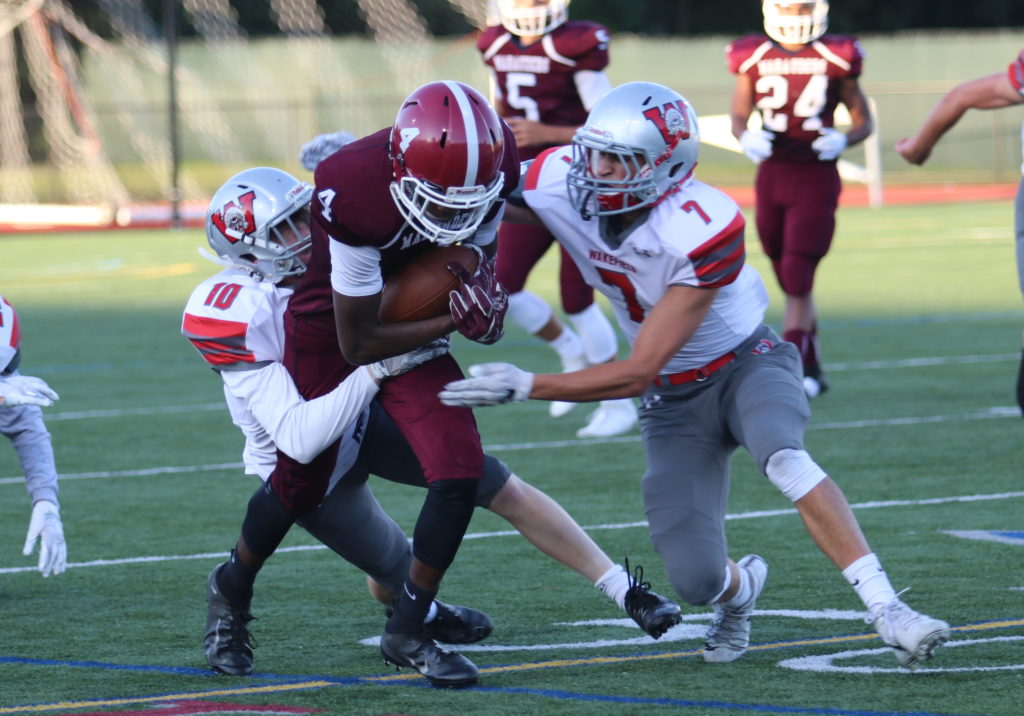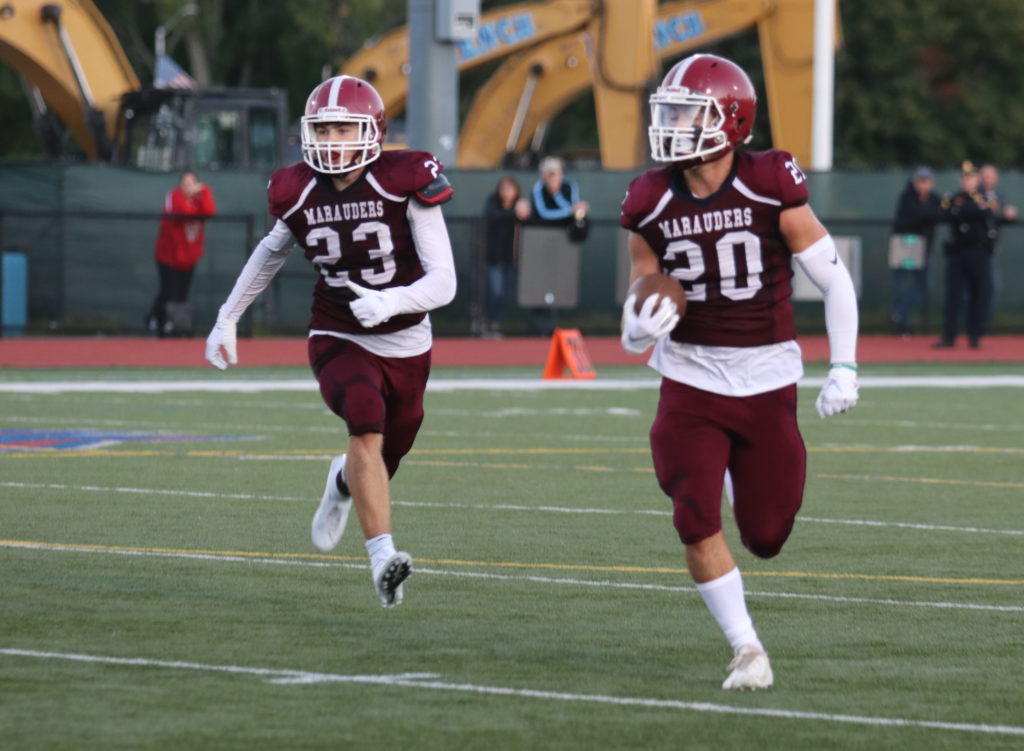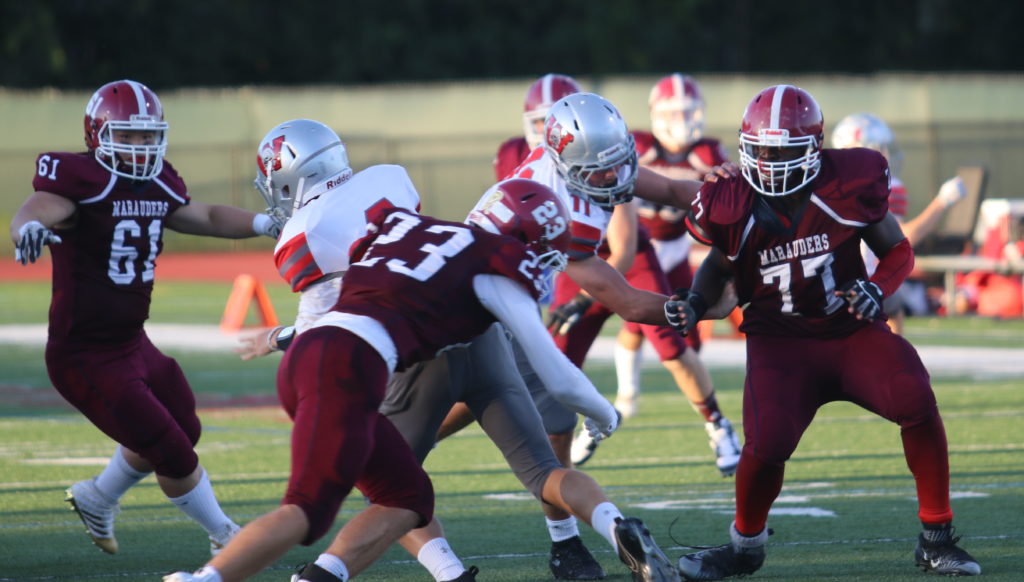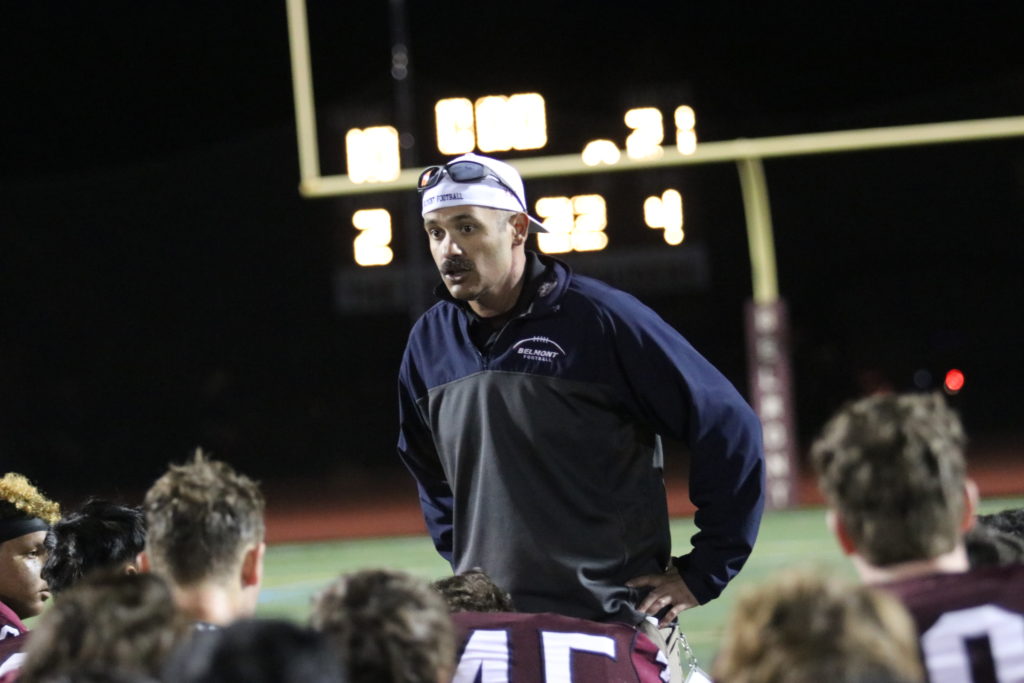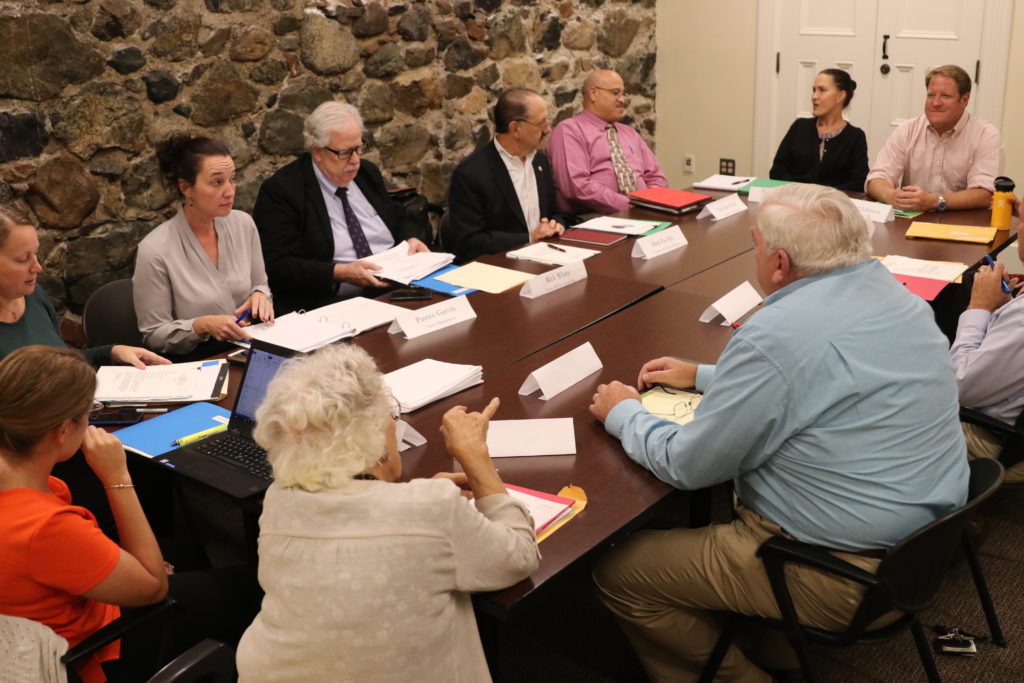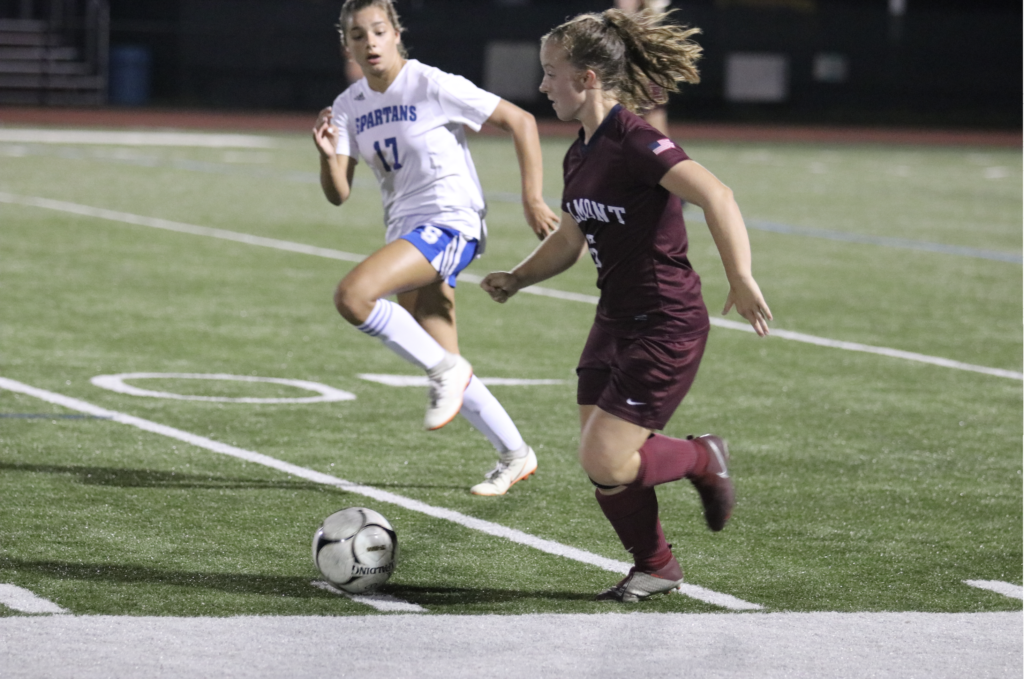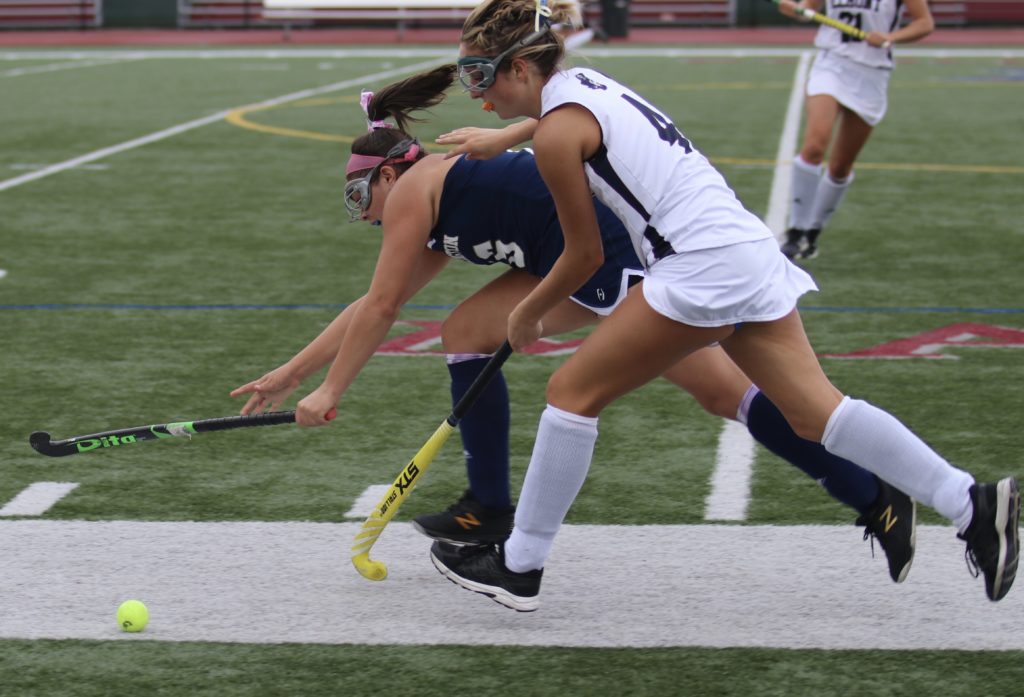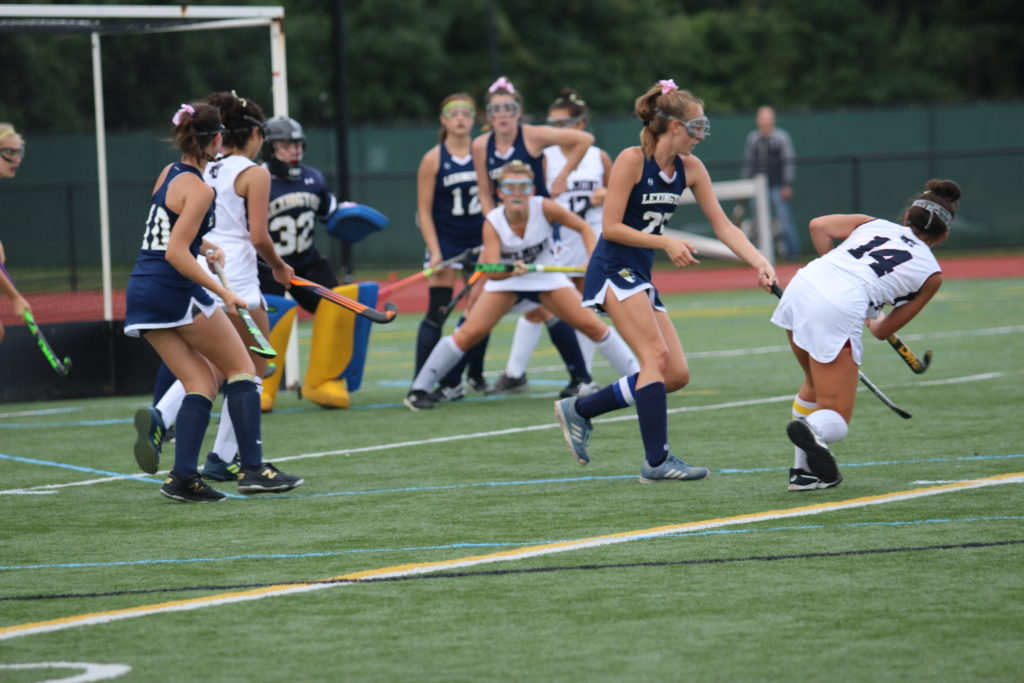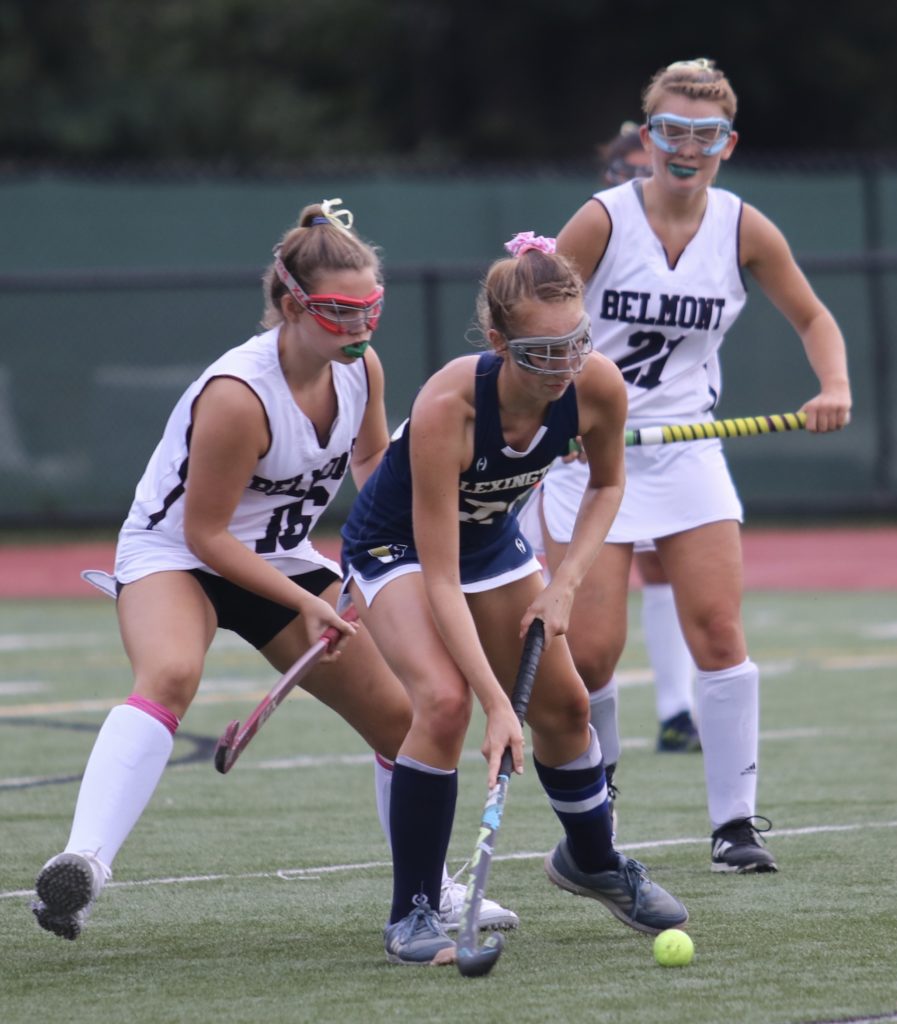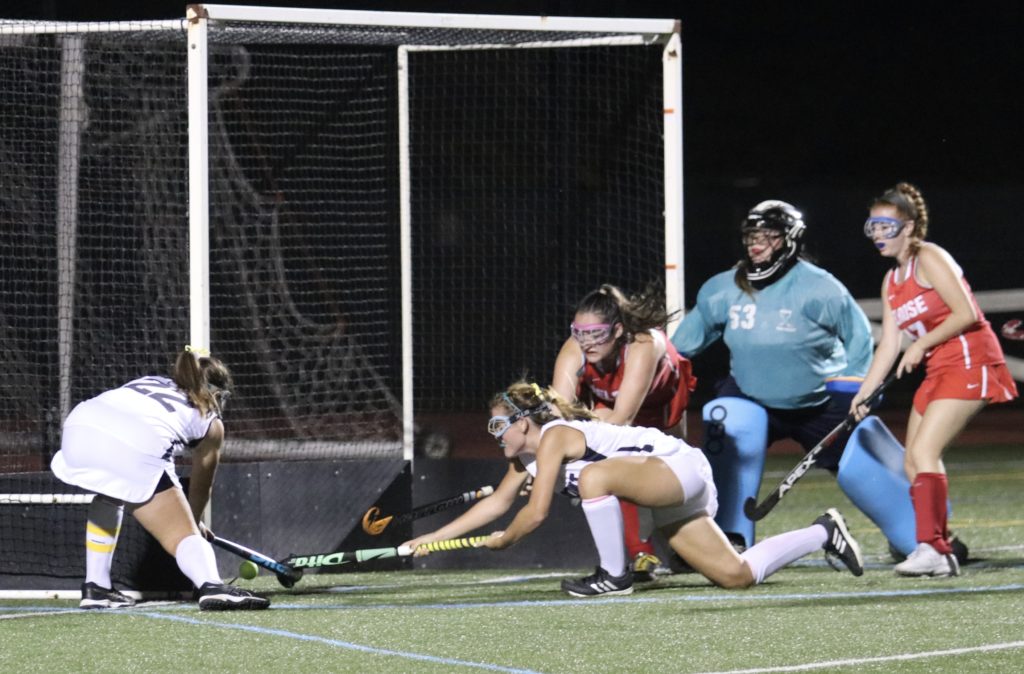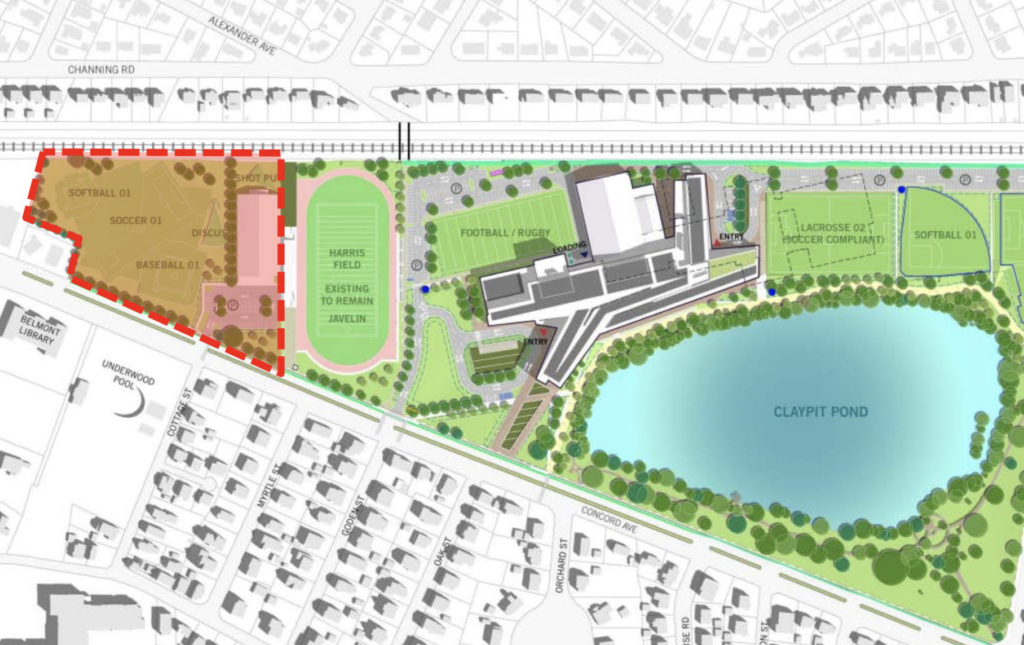Photo: Belmont’s Nena Trifunovic breaks through the block of Melrose.
Let’s start with the “bad” news this past week: Belmont High’s volleyball team dropped its first two games this season. The “good” news: It can be competitive with a pair of the top programs in the state, “top” as in squads in the Boston Globe’s Top 20 poll.
After losing to perennial Middlesex League powerhouse Melrose (ranked 8th) 3-1, last Monday, Sept. 16 to drop from the unbeaten, the Marauders spent Friday in Winchester (3rd ranked) where they fought a spirited, but losing battle with the Sachems by an identical, 3-1, score.
“I came in knowing it was going to be a fight against both [teams],” said Jen Couture, Belmont’s head coach. “I was hoping that [the team] would rise to the challenge. And they did because what I saw was some of the best volleyball we’ve played.”
Belmont faced two teams that are some of the best in the state: Melrose was a sectional semifinalist last year and a state finalist in 2017 while Winchester has turned on the afterburners this season having pummeled Barnstable – a state finalist, state semifinalist and state champions in the past three years – 3-1 earlier in the year.
In each of its matches, the Marauders would take a rare set from both squads – only the second time that has happened this season to Winchester, winning 25-22 – while remaining competitive thought the games.
Leading Belmont were co-captains Mindee Lai, Sophia Estok and Nena Trifunovic who stepped up with outstanding service games, “the most consistent we’ve been serving wise this season,” Couture said after the Winchester game.
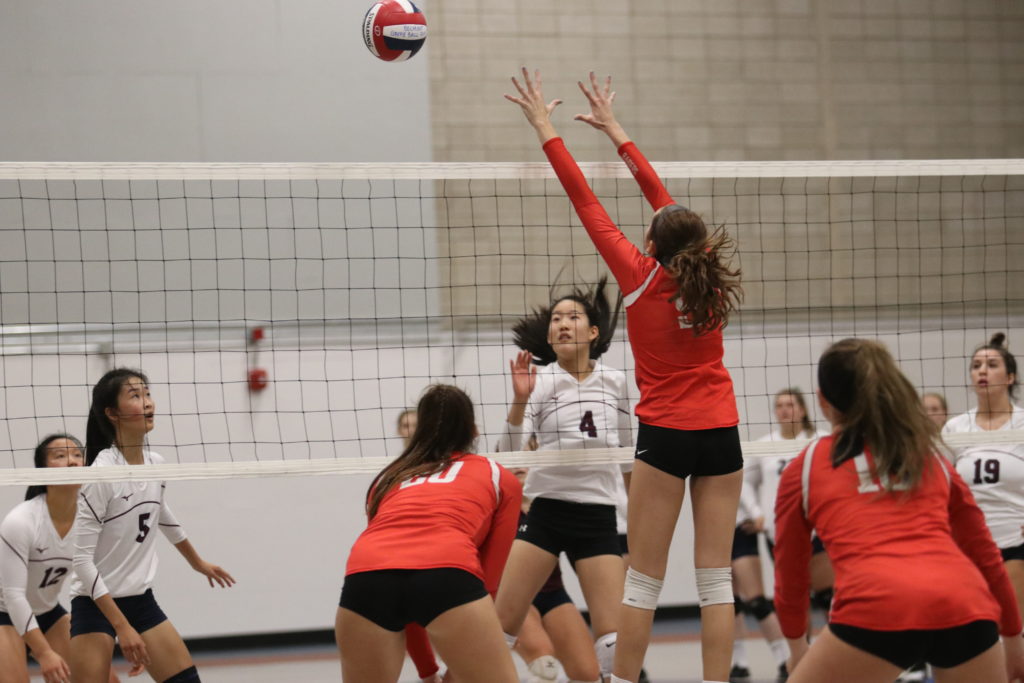
Adding to Belmont’s attack is rising star sophomore Katherine Bai who is second to Lai in kills with a kill ratio of 43 percent.
If there was one area that Belmont has some work to do setting up its blocking against opponents with taller frontline attackers. “We keep tweaking the lineup every game to adjust it based on the opponent. It keeps evolving,” Couture said.
Belmont would not leave the week
After dispatching quickly of the Minutemen in the first set and a more competitive second, Lexington, behind its big hitter Taylor Salerno, took control in the third and fourth sets to extend the game into a final fifth set.
In the decider, Trifunovic produced three winners at the net and Lai’s pinpoint serving gave Belmont an early 6-1 lead. Lexington’s blocking along with Salerno’s playmaking brought the Minutemen back to a 10 all tie. But Belmont would take the next four points – with Estok serving an ace at 12-10 – to secure the win.
“A game like this gives the team a confidence boost,” said Trifunovic. “Lexington was undefeated coming here so now we know that we can play these intense five sets against very good teams.”
“But next time we’ll keep it to three sets,” Trifunovic said.
